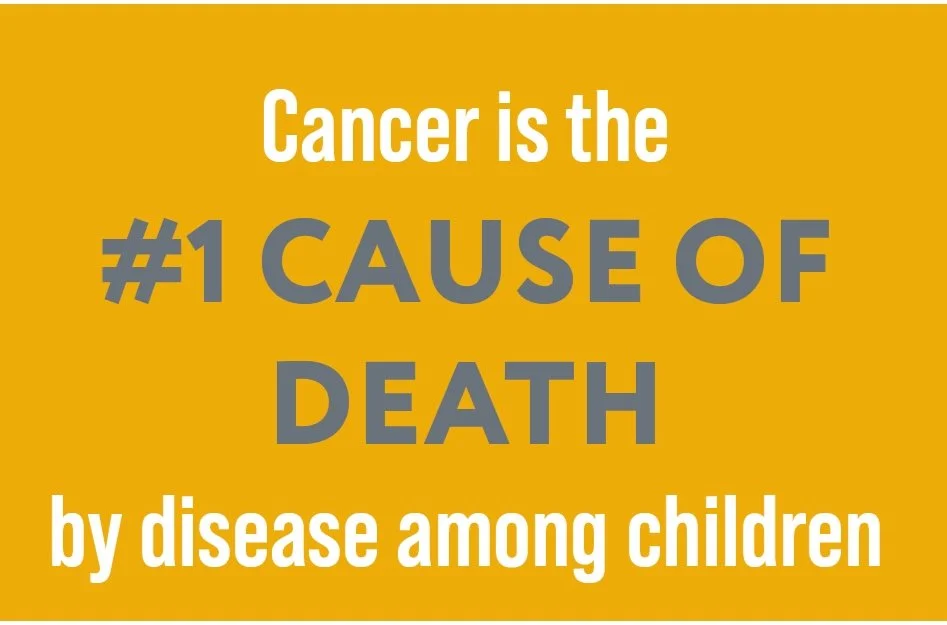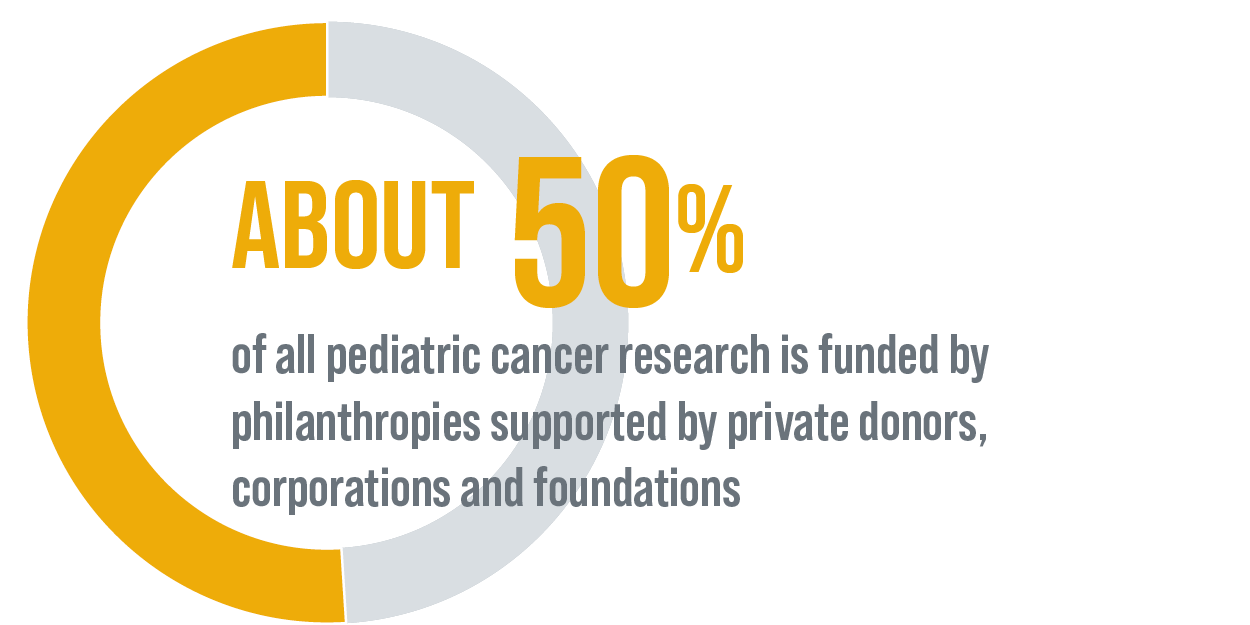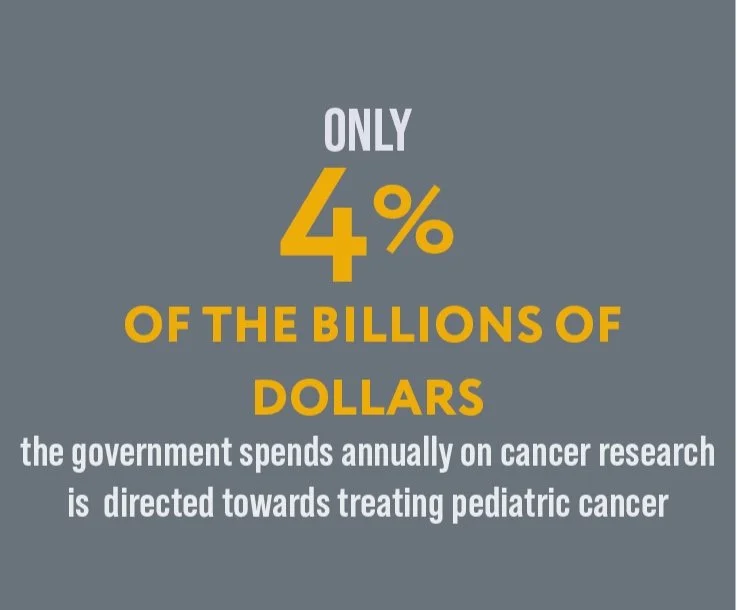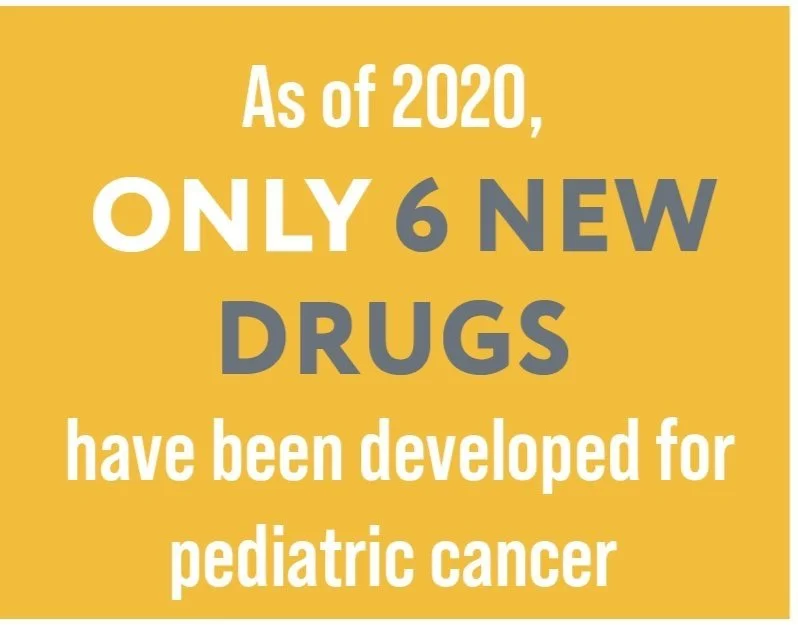
The Challenge
Do you know that cancer is the leading cause of death by disease of children in the United States?

There will be an estimated
13.7 million cases of childhood cancer
between 2020-2050.
Most cancer research is funded by the federal government, yet only about 4% of the National Cancer Institute's (NCI) budget is devoted to pediatric cancer research.
While more than 200 cancer drugs have been developed and approved for adults, the FDA, through 2021, has approved a total of 35 drugs for use in the treatment of childhood cancers.
In 2024 a total of 14,910 children and adolescents ages 0 to 19 will be diagnosed with cancer, almost 41 per day. Worldwide 400,000 children develop cancer each year.
REASONS
Pediatric cancer is considered rare and researchers favor developing drugs with the widest possible benefit and the largest market.
Conducting clinical studies on children involves unique ethical considerations, logistical challenges, and technical difficulties, so there are fewer studies conducted on children and they are underrepresented in randomized clinical trials.
What Can Be Done
To remedy this situation and to improve the treatment of childhood cancers, charitable organizations rely on private donors to fill the gaps in funding. At the Navis Foundation, our challenge is to increase support for pediatric cancer research to find better treatments for children and ultimately a cure. Your generosity makes it possible to close the gap that now exists in pediatric cancer funding and to create better outcomes for children and their families.
What is Wilms’ Tumor?
Wilms’ tumor, also known as nephroblastoma, is the most common type of kidney cancer in children, accounting for about 6% of all childhood cancers. It typically affects children under the age of 5, with the average age of diagnosis being around 2 to 3 years old.
The exact cause of Wilms tumor is not clear, but it involves random genetic mutations in kidney cells. Having a family history of Wilms’ tumor increases the risk. Black children have a slightly higher risk, while Asian-American children have a lower risk compared to other racial groups.
Symptoms
Abdominal swelling, often toward one side, fever, abdominal pain, constipation, high blood pressure, and blood in the urine.
A painless mass in the abdomen is a common presentation.
Treatments
Surgery is the primary treatment, often involving the partial or full removal of the affected kidney (nephrectomy).
Chemotherapy and radiotherapy may be used, depending on the stage and histology of the tumor.






